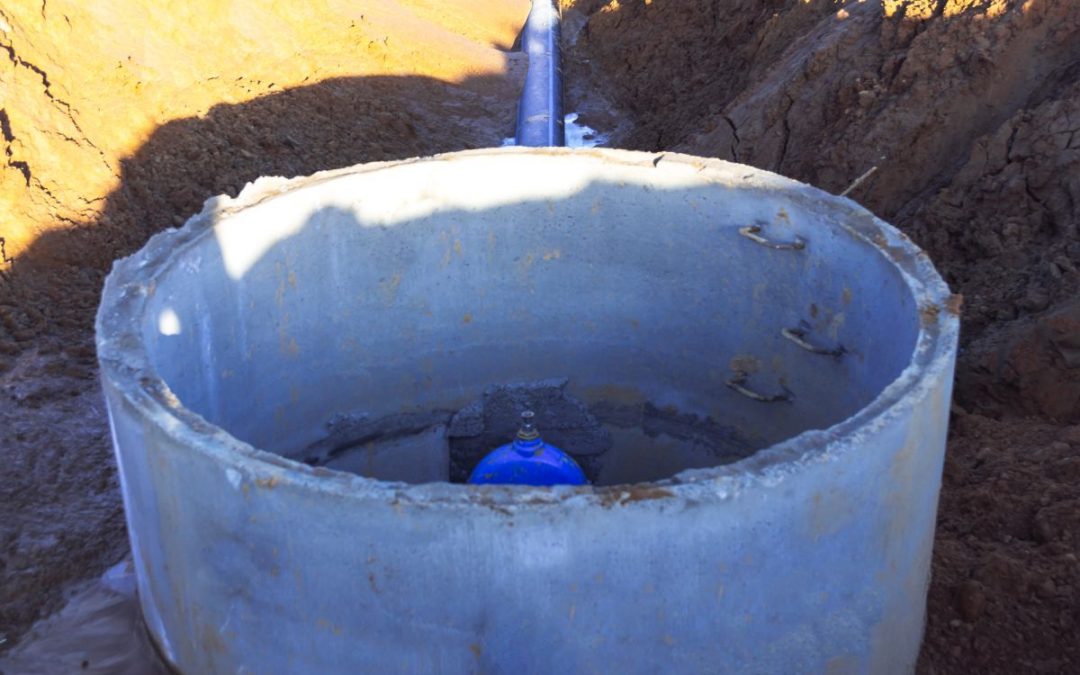Low water pressure in a well can be a problem for homeowners. The water pressure is measured in pounds per square inch (PSI) and varies depending on where you live. A home well has a pressure tank and a gauge that measures pressure. If the water pressure is low, you should adjust the pressure tank. You should also know how to test the pressure in a well to prevent further problems.
The first step is to turn off the good pump circuit and check the air fill valve to ensure there’s nothing plugged up. You can also try adjusting the pressure switch on the pipe that connects your well to the pressure tank.
What Causes Low Water Pressure When You Have A Well?
Several factors can cause low water pressure. The pressure tank can be damaged and cannot hold the pressure required for the system. It can also be caused by excessive leaking or perforation. Narrow water pipes can also prevent adequate water pressure. Having narrow pipes, either because they are too small or too thick, will slow the water flow.
One of the most common causes of low water pressure in a well is the presence of minerals. These minerals can affect water flow in the well and the home. Another cause is a poorly placed pump.
How Do You Increase Water Pressure On A Good System?
If you have a good system, you might wonder how to increase water pressure. The good news is that you can increase the pressure manually by increasing the pressure tank. This is a simple way to increase the pressure without changing the water pump or valve. You can also use a pressure gauge to measure the pressure. If the pressure gauge doesn’t show enough pressure, you should check it to see if it is broken or leaking.
A lack of water pressure is common among well-system owners. It can be frustrating to deal with. Thankfully, there are many fixes for low water pressure. In some cases, the problem can be fixed by cleaning the pipes. You can try changing the pressure control switch if this doesn’t solve the problem.
You can also increase the pressure setting of your well. By increasing the pressure setting, more water will be used throughout the system, resulting in better water pressure through your faucets. For instance, if you have a good pump with a rating of 30/50, you can raise it to 40/60. However, this will require a larger pump.
How Do I Adjust The Pressure On My Good Pump?
One of the first steps in adjusting the pressure on your good pump is to turn off the power to the pump and remove the cover. Next, check the factory presets. If the presets are off, then turn the nut clockwise one rotation. You may need to adjust the air charge in your pressure tank. Usually, you should have at least two PSI-less air than you want the pressure to be at the cut-on pressure.
If your water pressure is not enough, your fixture is likely leaking. This can result in low water pressure and cause faucets and fixtures to clog. You can use an air compressor to add more pressure in these cases. However, be careful not to add too much pressure because it can cause the water to run less. You can also check the air fill valve to determine your tank’s pressure.
You should also check your pressure switch to ensure it is set at the correct pressure. In most cases, you can set the switch to 30/50 PSI, 40/60 PSI, or 60/50 PSI. Once you have checked that the pressure in your tank is correct, you can turn on the pump.
Why Does My Good Pump Have No Pressure?
If your good pump is not producing water pressure, check to see if there’s a problem with the pressure tank. This part of the pump is important to keep in good working order. If it is not, it may be time to have it replaced. The process of replacing a pressure tank can cost $200 or more.
The pump controller is another area that can cause problems. Make sure that it’s plugged in properly and that it’s properly wired. If the pump isn’t running, it could be the pump’s control box or the pump may be tripped by a fuse. To test this component, remove the control cover and replace it. If you have a water pressure switch, ensure the lever is in the “On” position.
A pump’s lifespan is affected by water quality. If the water is hard and contains sand and sediment, the pump may wear out quickly and not produce enough pressure. As a result, the impellers won’t be able to push water up through the well. Another possible reason may be that the power lines that power the pump have corrupted or broken. Another reason low water pressure can occur is that the water pressure inlet is clogged. This can be caused by minerals or silt.
How Do You Reset A Well Water Pump?
If you’re having trouble with low water pressure from your well, you may need to reset your well water pump. To do this, first depress the air valve on the water pump and then check the pressure tank to ensure that the switch isn’t clogged with water. If the switch isn’t clogged, try pulling apart the electrical contacts.
Next, you’ll need to locate the pressure switch, which is located near the pressure tank. This switch is important because it senses when the water pressure in the tank drops and powers up the good pump. If the switch is damaged, it will not turn on. If you’re unsure, tap on the faucets or gauges to see if there’s a leak in the opening.
A power outage can cause the pump to fail to function, too. In such cases, you can reset the breaker or replace the fuse. However, this solution may only help temporarily. If the problem persists, it’s best to consult with a professional.
How Do You Unclog A Good Pump?
If you’re experiencing low water pressure on your well, there are a few things you can do to fix it yourself. First, you should shut off the water supply valve. Then, disconnect the wires and connections between the pressure tank and the good pump. Once disconnected, disconnect the water spigot from the pressure tank and connect it to a faucet. If you can’t find the problem in the water spigot, check the water tank for leaks.
Another way to increase water pressure is to adjust the pressure tank switch. The switch is usually on the pipe connecting the well to the storage tank. Many factory-set pressure switches are designed to turn on the pump at 30 psi and turn it off at 50 psi. A properly-sized pressure tank is critical to the success of your good system.
Another way to improve water pressure is to install a pressure booster pump. This device will transfer fluids from the surface to the upper level, allowing water to flow more easily through the pipes.
How Do I Know If My Pump Is Clogged?
If your water pressure seems low, your good pump may be clogged. This problem is caused by sediment. The water’s sand, dirt, and minerals will coat the pipes. It is a good idea to check your water pressure with a water pressure gauge to determine whether it is too low or too high.
If the water pressure in the well is low or constant, you may need to call a plumber to inspect it. A clogged pump may not work correctly or may cause other issues. It could cause your circuit breaker to trip. It can also compromise your water quality.
Before inspecting your pump, turn off the water supply to the well. If possible, wear rubber gloves to protect your hands. You may need a flashlight to locate the pump. The pump may be surrounded by a bracket or attached to the interior of the well with tubing. To remove the pump, you may need to loosen its connection to the bracket and remove it from the tubing.
How Do You Tell If The Well Is Clogged?
If you have a good system, you may wonder how to fix low water pressure. There are several possible causes of low pressure and some simple ways to increase it. First, you need to check your pressure gauge. It should read 40 to 60 pounds per square inch. When you see a reading below, adjust the pressure tank and check your air-fill valve. Sometimes, you may need to turn off your water circuit or adjust the switch to an appropriate setting.
Broken components can also cause low pressure. A home plumbing diagnosis service can help you determine which components are the source of the problem. A well’s ideal water pressure is 40-60 psi. By learning how to test the water pressure in your home, you can detect problems before they become more serious.
Another cause of low water pressure is sediment buildup in the well. Most wells are equipped with sediment filters, which can become clogged over time. If you have a well, the best way to prevent this problem is to change your sediment filter regularly. It would be best if you did this at least once every six months.
Conclusion
A good system’s water pressure may suffer if the water pipes themselves are too narrow to provide a good flow rate for the household. If you notice water pressure drops at one source when another water-drawing source is turned on, installing a constant pressure system could fix the problem.
A constant pressure system is easily installed in your basement on the line where the water enters your home. Test the air fill valve with an air pressure gauge and see where your pressure lies. Turn off the pump and test the captive air bladder using an air pressure gauge. A constant pressure system installation is a major decision usually made before implementing a good system in the first place. Another way to increase water pressure in your home is to add a water pressure booster pump to your home plumbing system.



